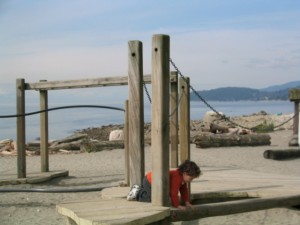Posts Tagged ‘politics’
An Announcement in Two Parts – Part 1: Not This Time
Three years ago, I put my name forward as a candidate in the 2011 municipal elections. I ran for the position of Trustee on the West Vancouver Board of Education and was honoured when voters in this community elected me to serve in that capacity.
My foray into electioneering also marked my social media debut outside the comfort zone of Facebook.
I dove into Twitter, a platform with which I’ve become very comfortable and which is now a part of how I absorb, consume, and contribute to media on a daily basis. It has also allowed me to create an invaluable network of connections.
After a long time of saying, “I would like to start a blog,” the election also spurred me to start one which I called The Comfort of Why. The best explanation for this title can be found in the speech I made at the first all-candidates’ meeting in 2011 where I said:
I take great comfort in the question why. As long as I’m asking why, I’m thinking, I’m reflecting, I’m challenging. I am looking for answers rather than assuming I have all the answers. I’m seeking information rather than dictating the way that things ought to be perceived.
To me, this questioning is not about undermining a system and disregarding the work that’s been done. It’s about validating what you believe, being responsive and strategic — making changes when they’re needed, when they’re necessary, and making them at the right time.
My first blog entry was posted on October 19, 2011, and it was comprised almost entirely of questions including this one:
Consider, too, that the BC Ministry of Education is pushing the concept of “personalized learning in the 21st century”. Why? What does it mean?
My position at the time, in regard to this particular question, was as follows:
Well, I want to be at the table to make sure that if there’s an overhaul of the system it’s done well and it’s done right. That it’s implemented in a way which benefits all students.
After three years of being at the table, I still feel this is a valid question and one that is not being addressed at a provincial level.
I still want to have this conversation. In fact, I feel we must have this conversation if we are to continue to offer our children the best opportunities to learn, to grow, and to find their way in the world.
While I recognize the valuable work that our Board has done in the past three years, in collaboration with the District Leadership Team, our education partners, our educators, and all our employees, I will not be seeking reelection in 2014.
Why?
There are a number of factors, but let me focus on three key points.
First, West Vancouver is a community with such depth of talent and with many actively engaged residents who are passionate about education. The deadline for nominations is tomorrow and already seven candidates have filed their papers which means we will have a dynamic and substantive campaign featuring a diverse range of opinions from individuals who all have much to offer.
Second, the most recent job action was very instructive and there are many lessons to be learned in how it played out. One of the most significant learning outcomes for me was to recognize that in order to move the provincial government into action on education, we need much greater direct engagement from the public. That citizens’ voice has to be galvanized if we want to ensure that education is a prominent, if not THE, election issue in 2017.
Finally, education in British Columbia has become such a polarized — and polarizing issue — that what we don’t talk about is education. This discussion — the conversation I’ve always said I wanted to see happen — has been drowned out by criticisms and accusations, by duelling press conferences and media soundbites, by job actions and political posturing.
It’s time that we, as citizens and voters, speak up and get what we want for our children, our society, and our future.
I have some ideas on how we might do just that.
Watch for Part 2.
Reflecting on the Post-Appeal Landscape
This is not an article about denying any person or organization the right to due legal process.
Why do I feel it necessary to start off with such a sentence?
Because I’m familiar with the way in which posted opinion pieces are picked apart in the frenzied hot-house atmosphere of social media and what I’m about to say will likely be open to simplistic misinterpretation.
Before I explain and as I’ve done in previous articles, I’d like to note that any errors of fact in the following discussion are my own as are the views expressed here: these are not the views of the West Vancouver Board of Education. I’d also like to clearly acknowledge that this is not a legal opinion.
Starting in 10 days’ time, the BC government and the BC Teachers’ Federation (BCTF) will once again be in court, this time at the BC Court of Appeal addressing the government’s appeal and stay which were both granted in response to the Griffin decision released earlier this year.
The case hinges on what Justice Griffin deemed to be the unconstitutional removal of clauses from the collective agreement relating to class size, class composition, and the ratio of specialist teachers.
I’m not going to dwell on the intricacies of labour law, on the history of the case, or on the relative merits of each sides’ arguments.
What I want to touch on is what may happen after the appeal.
Why?
Because it’s time to get public education in BC out of the courts and back into the classrooms and I’m concerned about the post-Appeal landscape in terms of the potential for continuing legal proceedings.
An article by Ian Mulgrew of The Vancouver Sun prompted me to reflect and write on this issue. In his piece, Mr. Mulgrew explains a recent Supreme Court decision which declared that the fees BC charges for court hearings are unconstitutional. The court ruled that these fees in effect prevented individuals from unfettered access to the legal system in their pursuit of justice.
So what’s the connection to the pending appeal of the Griffin decision?
To me, it’s this. We know the Supreme Court of Canada is the highest court in the land and we know it remains as the ultimate arbiter especially in regard to Charter issues. Applying to the Supreme Court of Canada with regard to a judgement ought not to be taken lightly and only with due regard to the consequences its decisions may have on governance and policy.
There has been much speculation that no matter who wins the appeal this October, the next step is bound to be the Supreme Court because the issues raised in the Griffin decision go to the very heart of collective bargaining rights.
But does it automatically follow that it is the right course of action in this situation?
Specifically, if the government loses the appeal would it be smarter to honour the spirit of the Griffin judgement and negotiate class size and composition rather than taking the matter to the Supreme Court of Canada and risking an outcome which could have a significant impact on all public sector agreements?
Similarly, if the government wins the appeal would it be smarter for the BCTF to honour the spirit of the Griffin judgment and negotiate class size and composition rather than taking the matter to the Supreme Court of Canada and risking an outcome which may actually relieve the government of an obligation to significantly reinvest in the BC public education system?
I know that lawyers for both sides will have very compelling reasons for their clients to continue to pursue the case all the way to Ottawa. Why not? It’s a legal challenge and becomes part of one’s legal legacy let alone precedence as law of the land.
However, is it valid to say just because you can doesn’t mean you have to? And while the outcome of the case on court hearing fees is a victory for citizens, I think the case regarding the BCTF collective agreement is even more complex and nuanced which makes the risk, in my opinion, greater.
And while I’m proud of our legal system and would always support due process, I’m not convinced — yet — that extending this particular legal imbroglio all the way to the highest court will be in the best interest of our students.
What Is The Purpose of Education?
It was a very interesting day to hear Susan Lambert speak.
It was the day teachers throughout British Columbia were voting on whether or not to ratify a new collective agreement, one which fell short of expectations and which merely represented the achievable at this moment in time.
While it was a difficult deal for educators to accept, one of the most important achievements for the BC Teacher’s Federation (BCTF) in the new agreement was the preservation of the integrity of their court case on class size and composition.
And Susan Lambert, who had other reasons for looking askance at the proposed agreement, knows how critically important that court case is for the future of public education in BC.
For those who may not know, Susan Lambert is the past president of the BCTF and a long time educator having started her teaching career in 1973/1974. She is also an alumna of the Faculty of Education at Simon Fraser University (SFU).
And that’s how I happened to be in the audience to hear her speak. She was addressing an education class at SFU, a class in which my nephew is enrolled.
Yes, I have a nephew who is currently pursuing an undergraduate degree at SFU and whose long-term plan is to become an educator.
I not only support his choice, I celebrate it because no matter the hardship and the challenge, being a teacher, in my view, remains one of the most fundamentally important roles in society.
My nephew’s professor had invited Ms. Lambert to address his students and had told them guests were welcome. When my nephew extended the invitation, I jumped at it: this was not an opportunity I was going to miss.
Why?
Because while I may not agree with Ms. Lambert on any number of issues, she is a passionate advocate for public education. Not only that, but she is a firm believer in making the world a better place, particularly for those who are most disadvantaged in our economic system.
She is also someone worth listening to because of her experience in BC’s public education system and because of her commitment to advocacy.
At the beginning of her presentation, Ms. Lambert challenged the students to consider what their purpose was in becoming educators. In other words, she wanted them to consider why it was they wanted to teach. She asked them to consider the question because, as with any vocation or endeavour which we undertake, it is the meaning in what we do and the intent with which we do it that makes our choices purposeful and rewarding in good times and in bad.
I think this is particularly true in a profession such as teaching which is based on relationships and where doing one’s best is instrumental in helping others to achieve theirs.
As much as I appreciated Ms. Lambert’s challenge to the students, it was her summary of the purpose of education which crystallized why the fight for public education in British Columbia is so critical.
And it is simply this: a thriving and vibrant public education system is the essential ingredient for a civil society.
A just society.
An equitable society.
What greater purpose could there be but to work on behalf of a system which is the foundation to a better future for all citizens and not only those who can afford it?
When Is One Reopening Clause Better Than Another?
Today will be a historic day in BC public education. Members of the BC Teachers’ Federation (BCTF) will be voting on whether or not to ratify the tentative agreement their union hammered out with the BC Public School Employers’ Association (BCPSEA) earlier this week.
As of about 9:00 p.m. Wednesday evening, the BCTF had shared summary information with its members and conducted information sessions on the tentative agreement although they had not yet released the full text of the proposed contract.
While the BCTF executive and bargaining team have maintained that the tentative agreement does not infringe on the court case regarding class size and composition, there are those who dispute their assertions particularly with regard to what’s being called the “reopening” provision.
Not only do I believe that the BCTF is correct in saying that the reopening provision does not hamper the court case, but I see it as a “give” on the part of BCPSEA and the government.
Why?
Before I explain and as I’ve done in previous articles, I’d like to note that any errors of fact in the following discussion are my own as are the views expressed here: these are not the views of the West Vancouver Board of Education. I’d also like to clearly acknowledge that this is not a legal opinion.
While I haven’t seen the final text of the reopening provision, this summary represents my analysis based on the preliminary information I’ve received from two different sources.
According to what I know, if the government wins the appeal, the collective agreement will remain in place until the end of the term which will be June 2019. During that time, if the BCTF has lost the appeal, it may try to refer the decision to the Supreme Court of Canada (SCoC) (which may or may not grant leave to hear the case), but in the time it may take for such action, teachers will be at work and students will be in school.
If you remember, this is significantly different from BCPSEA’s original E81 proposal which would have allowed reopening of the collective agreement by either party following the appeal decision. Due to intense public pressure, this clause was dropped by BCPSEA during bargaining.
So if the government wins the appeal — which may mean that the class size and composition language would not be restored to the collective agreement — the contract would not be affected. I say “may” because we don’t know if the appeal will address all of the Griffin judgement or only parts of it. There’s no way of saying with absolute certainty what a government win would look like.
On the other hand, if BCTF wins at the Court of Appeal, then the collective agreement may be opened for discussion by the parties. The draft language I’ve seen seems to indicate that the collective agreement would only be opened on this issue. If this holds true in the final text of the proposed clause, it is significant because it means the talks which would result from any reopening would only contend with class size and composition and not any of the other terms or provisions. That means wages, benefits, prep time, and the changes regarding TTOCs agreed to in this round of bargaining would all be protected.
Faced by a BCTF win at the Court of Appeal, which many presume is likely but which is not a predetermined nor a guaranteed outcome, the government may choose to petition the SCoC. I’m not clear yet on what that means with regard to negotiations on class size and composition. That is, if the government appeals to the SCoC, will the parties still open that part of the collective agreement even though the court process has not been completed or will they wait until such time as the SCoC, if it agrees to hear the case, makes its final determination?
Nonetheless, the current deal, if ratified, would remain in place until such time as changes regarding the restored language around class size and composition was agreed to and implemented. If I’m understanding this correctly and if the court decision comes down sometime before June 2019, the talks on class size and composition could take place without a strike or lockout which would only be options available when the contract does expire.
Looked at in this way, it seems to me that this reopening clause is a vast improvement, from the perspective of the BCTF, over what had been proposed by BCPSEA in E81.
With regard to the view that the reopening clause imperils the court case, it seems to me this opposition is based on an interpretation which is not aligned with the Griffin judgement nor in the spirit of it.
This discrepancy is at the heart of the legal conundrum and which will only be clarified by the upcoming rulings at the BC Court of Appeal and the SCoC if this case goes that far.
The conundrum is this: in the face of a lack of agreement on class size and composition, once and if the collective agreement is reopened for bargaining, which language carries forward into future contracts?
The assumption by many BCTF members seems to be that in such an eventuality the 2002 language, as it was and in full, would carry forward with fixed limits on class size, a fixed cap on class composition, and fixed ratios for specialist teachers.
I’m not sure that’s a valid assumption because it seems to me Justice Griffin restored the language to the historic contract with a clear admonition that it would likely change through collective bargaining.
But, what did Justice Griffin mean by change? Does change mean the same language, different numbers? Different language, same numbers? Different language, no numbers? How large a scope does collective bargaining have when it comes to new language in a contract for pre-existing provisions?
There’s another piece of the puzzle to consider. If the class size and composition provisions had remained in the 2002 collective agreement, the parties would have potentially negotiated at least two or three or more collective agreements since then. I think it’s reasonable to assume that the language of those hypothetical agreements may have looked different from 2002 (especially when you consider the unconstitutional measures the government took to remove those sections from the contract). As much as we might conjecture, we can’t say with certainty what the modified language would have looked like.
Although we don’t know what a consistently negotiated contract may have looked like, it seems to me that in the face of a lack of agreement now, the language of the most recent agreement — the agreement we can imagine but which never existed — would be the language to go forward NOT the historically restored language from 2002. And, that’s why there’s room in this particular case to consider significantly new language for class size and composition albeit it is new language which the two parties will have to agree upon through a process of good-faith collective bargaining.
Because the puzzle of what happens in the absence of an agreement remains unsolved, I’ve come to understand much better why the most reasonable approach in this situation has to be “let the courts decide” and the only path to a negotiated settlement, at this time, was a “work around”.
The need to let the courts decide is clearly one of the factors which has made this round of bargaining so difficult.
It’s also why I believe that the proposed reopening clause works in favour of the BCTF and its members because it seems to provide a way to discuss the most critical issue in the collective agreement without any further labour disruption to the public education system until June 2019.
And I can’t help but feel that’s a good thing.
Pick One, Settle, And Let’s Get Schools Open
I would rather be writing about a resolution to the current labour dispute in public education.
Instead I’m left to speculate on why, with the many alternatives available, there is no settlement between the two parties after approximately 18 months of bargaining. I would simply like them to agree on one resolution mechanism and to move towards a deal rather than perpetuating this untenable situation.
Why?
Because while there are many improvements required to ensure the future health and vitality of the public education system in BC, this dispute is doing harm with every day that passes. It is damaging working relationships, it is negating the brand of public education which may drive parents into the private system, it is denying gainful employment to teachers and others, it is affecting families, it is compromising the year for students, and it is potentially setting the stage to keep education in the courtrooms and not the classrooms for years to come.
As I’ve done in previous articles, I’d like to note that any errors of fact in the following discussion are my own as are the views expressed here: these are not the views of the West Vancouver Board of Education. I’d also like to clearly acknowledge that this is not a legal opinion.
So what are the options available to the BC Public Schools Employers’ Association (BCPSEA) and the BC Teachers’ Federation (BCTF) to pursue a settlement? There may be many more, but I would like to focus on four which have been a feature of the on-going public dialogue, whether in the media, online, or in conversation. These are a negotiated settlement, mediation, binding arbitration, and the appointment of an industrial inquiry commissioner.
Negotiated Settlement
I’ve publicly stated that in my opinion a negotiated settlement would be the best outcome for the public education system in BC.
I remember hearing Dr. Charles Jago on CBC radio a few months ago. He was the mediator who helped arrange the last settlement between BCPSEA and the BCTF. In the interview, he said that the key to achieving a negotiated settlement is to find one area where the two parties seem to have a common interest and to build from that base of consensus. In the deal he mediated, that base of consensus was an incredibly narrow plank which had to do with one benefits issue. It may have been narrow, but it was enough to get the process in motion.
One would like to think that the public education system itself represented a common base of interest, but the challenge is that the two negotiating parties in this dispute, BCPSEA and the BCTF, seem to interpret public education in very different ways.
Given the current status of the relationship between the two sides, let alone the history and the legacy of a litigious nature now seemingly endemic in the system, the likelihood of a negotiated settlement seems remote. If so, what are the prospects of success with the remaining three options I’ve identified?
Mediation
Both parties have expressed interest in mediation as a means by which to resolve the dispute and it is a viable option. I’d like to suggest that in the absence of a negotiated settlement, a mediated settlement would likely be the next best approach for the parties to resolve this crisis.
Although BCPSEA and BCTF have supported the notion of mediation, based on the evidence of the revolving door of possible mediators there is cause for concern regarding the viability of this option.
Facilitator Mark Brown, who had been an observer at the bargaining table from very early on, bowed out of the process when the BCTF issued a public call for Vince Ready to become involved. Brown took this, rightly, as an expression of non-confidence and graciously stepped aside. At first Vince Ready, after reviewing the position of each side, declined to take the task on as did Justice Stephen Kelleher. Subsequently, and which perhaps we misinterpreted as a sign that the parties had moved in any substantive way, Vince Ready agreed to a weekend of exploratory talks to determine if the time had come for mediation.
It’s important to explain here that a mediator’s role is not to negotiate for either party in a dispute. The mediator’s skill is his/her ability to pull, push, and prod both parties to help them overcome the gap between their positions. In essence, the mediator is an advocate for the deal, not for one side nor for the other.
After the weekend of exploratory talks, Ready declared an impasse. That is, his evaluation of the willingness of the parties to “mind the gap” and to get to the other side led him to believe that mediation would not be successful. In his remarks, he identified wages and benefits as a continuing obstacle to an agreement as well as the larger issue, and perhaps the most contentious, around the language of contract provisions relating to class size and composition.
Since the shutdown of those talks, Mr. Ready has stepped back, but he has not entirely stepped away which means that mediation remains an option. However, mediation will not be the option for a resolution until such time as we see Mr. Ready call the two parties back together. Until he does that, we can rest assured that the two sides remain too far apart.
If mediation continues to be an option, but not a likely one at the moment, what are the remaining options for potentially securing a settlement?
Binding Arbitration
On Friday, the BCTF called for binding arbitration to help break through the impasse in bargaining.
Binding Arbitration is another accepted mechanism to help sort out contentious collective agreements where the bargaining process appears to have reached a stalemate. With binding arbitration, each side puts forward their “final” offer and the arbitrator — who is recognized as an independent third-party — fashions a collective agreement which they feel represents the best solution. It’s binding because both parties have to accept the arbitrator’s decision. It is essentially ceding control of the bargaining process.
The challenge with the way that the BCTF has structured this new proposal is that it is asking for arbitration on only a few issues and not on all the issues.
To put wages, benefits, and prep time forward for binding arbitration leaves out class size and composition. This would be a viable approach if the language around class size and composition had been agreed to and these other issues were the only outstanding ones. However, there is no agreement or understanding on the language around class size and composition.
The BCTF’s argument appears to be that these specific issues can be arbitrated while the issue of class size and composition is left to the courts to decide.
The problem is we don’t know when the courts will decide on class size and composition. The appeal of the most recent Griffin decision is not till mid-October, but we don’t know when the ruling will be made. There’s also the possibility that the case could go to the Supreme Court of Canada which would further extend the timeline for any certainty on this particular issue.
In the absence of this court certainty, the BCTF has proposed the establishment of an interim fund to address the issues of class size and composition. If the government were to agree to the terms of the interim fund, then perhaps the other items could go to arbitration. But, this too is complicated because if the government agrees to the terms of the interim fund and if the courts are to decide on class size and composition, then there needs to be a mechanism by which the parties can reenter into collective bargaining once the court decision has been made.
Another complicating factor is the government’s reluctance to engage in binding arbitration because of its experience with arbitration during the 2002 dispute with BC’s doctors. You can find out more about this in Columnist Vaughn Palmer’s recent Vancouver Sun article.
While the opinion of some may be that the government can and should pay whatever it takes, there has to be some acknowledgement that the government is also required to take financial implications into consideration. We may not want money to be a deciding factor when it comes to funding public education, but I don’t think it’s fair to deny the importance of public finances either nor the multi-faceted obligations of the government to all taxpayers.
The government knows that binding arbitration would likely result in a higher financial settlement than they may want to consider. The BCTF hasn’t included class size and composition in its proposal for arbitration, partly because of the court case, but also because it could risk getting less that it is seeking.
That’s not to say, despite the government’s disavowal of binding arbitration, that this isn’t still a viable option. However, it would depend on the parties being able to agree on an acceptable framework for arbitration — something that offered each side enough comfort to allow them to cede control over the outcome.
If not mediation and if not arbitration, are there any other options left for the two to consider?
Industrial Inquiry Commissioner
I don’t know enough about what’s involved with appointing an Industrial Inquiry Commissioner, but I know it’s an approach which the Vancouver School Board has promoted and I’ve also seen it promoted on social media.
As I understand it, an Industrial Inquiry Commissioner is an independent third-party much like an arbitrator. He/she would talk to both sides and investigate the impasse they’ve come to in collective bargaining. The outcome of this investigation would be a report which would identify why the parties have failed to arrive at a settlement and the report would also contain non-binding recommendations.
I asked on Twitter last night why this would work if the recommendations were non-binding. The feedback I received was that given what the process entailed, it would create a situation where the parties would be compelled to resolve their differences based on the framework provided by the Commissioner.
It sounds like a very viable approach and the question then becomes why is this not the option that’s being pursued most actively by BCPSEA and the BCTF given the roadblocks which seem to hamper the other options we’ve discussed?
I’m not sure, but I would hazard a guess that both parties would be reluctant to face up to what the report may reveal with regard to bargaining strategies and proposals. There is also a risk involved, as with binding arbitration, of setting in motion a mechanism which entails ceding control of the outcomes and being spurred into pursuing a particular course of action.
These are the four options which I’ve seen put forward most often as ways in which this dispute could be settled and which would get teachers back to work and students back in school. If none of these options is pursued successfully, then we may see legislation to end the dispute and I believe that will be the worst possible outcome for the public education system.
Having discussed these four options and knowing that none of them appears to have led towards a solution, I’m left with one key question for each of the two parties.
My question to BCPSEA is this: after approximately 18 months of bargaining, just exactly how much money is the government prepared to put into the Learning Improvement Fund and how much money is it willing to put forward to address grievances arising from the Griffin decision in order to settle this dispute?
My question to the BCTF is this: apart from the government “giving in” by writing a cheque for the full value of the TF bargaining proposals as they currently stand, what is the way out of this current labour dispute?
My parting thought to both BCPSEA and the BCTF is this: there are many options — four that I’ve outlined in this article alone — which may help to resolve the labour dispute.
Please just pick one.
Make it work and get a deal done.
Open schools and let kids get back to learning.





